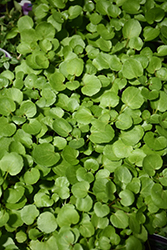It's all about ...
plants

Height: 12 inches
Spacing: 6 inches
Sunlight:
![]()
![]()
Hardiness Zone: (annual)
Other Names: Yellowcress
Description:
A bushy, water-loving variety with interesting dark green foliage with show white flowers appearing in the summer months; great as an annual in mixed beds, water gardens, and containers; edible leaves with a slight peppery taste, great in salads and soups
Ornamental Features
Watercress features showy white cup-shaped flowers at the ends of the stems from early summer to early fall. Its round leaves remain green in colour throughout the year.
Landscape Attributes
Watercress is an herbaceous annual with a ground-hugging habit of growth. Its medium texture blends into the garden, but can always be balanced by a couple of finer or coarser plants for an effective composition.
This plant will require occasional maintenance and upkeep, and should not require much pruning, except when necessary, such as to remove dieback. It is a good choice for attracting butterflies to your yard. Gardeners should be aware of the following characteristic(s) that may warrant special consideration;
- Insects
Watercress is recommended for the following landscape applications;
- Mass Planting
- Border Edging
- General Garden Use
- Container Planting
Planting & Growing
Watercress will grow to be about 12 inches tall at maturity, with a spread of 8 inches. When grown in masses or used as a bedding plant, individual plants should be spaced approximately 6 inches apart. Its foliage tends to remain dense right to the ground, not requiring facer plants in front. This fast-growing annual will normally live for one full growing season, needing replacement the following year.
This plant does best in full sun to partial shade. It prefers to grow in average to moist conditions, and shouldn't be allowed to dry out. This plant does not require much in the way of fertilizing once established. It is not particular as to soil type, but has a definite preference for alkaline soils. It is somewhat tolerant of urban pollution. This species is not originally from North America.
Watercress is a fine choice for the garden, but it is also a good selection for planting in outdoor pots and containers. Because of its spreading habit of growth, it is ideally suited for use as a 'spiller' in the 'spiller-thriller-filler' container combination; plant it near the edges where it can spill gracefully over the pot. Note that when growing plants in outdoor containers and baskets, they may require more frequent waterings than they would in the yard or garden.
